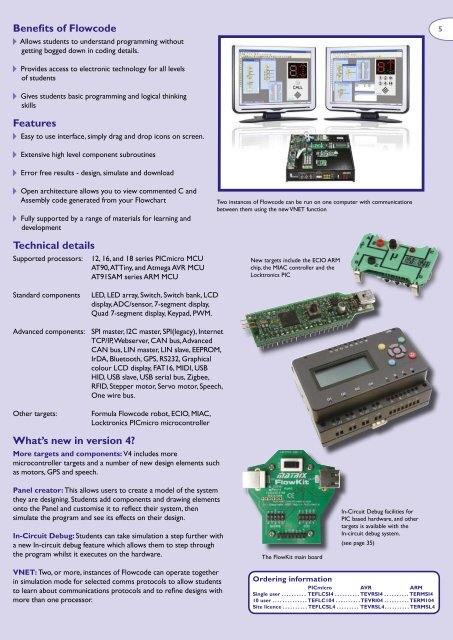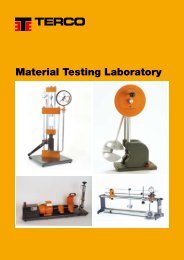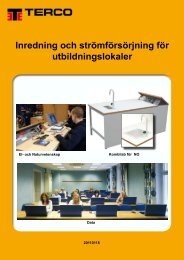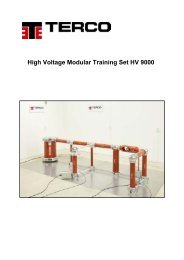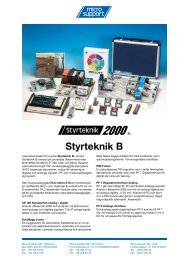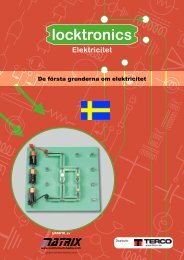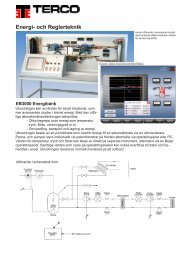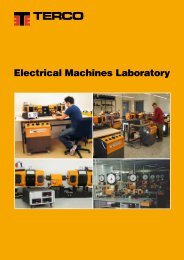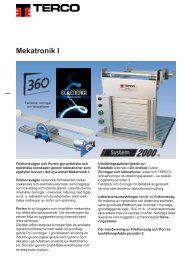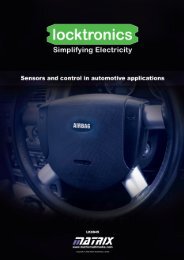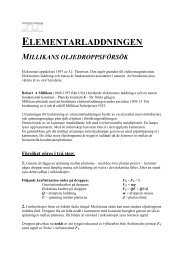modern electronics teaching resources - Terco
modern electronics teaching resources - Terco
modern electronics teaching resources - Terco
- No tags were found...
Create successful ePaper yourself
Turn your PDF publications into a flip-book with our unique Google optimized e-Paper software.
Benefits of FlowcodeAllows students to understand programming withoutgetting bogged down in coding details.Provides access to electronic technology for all levelsof studentsGives students basic programming and logical thinkingskillsFeaturesEasy to use interface, simply drag and drop icons on screen.Extensive high level component subroutinesError free results - design, simulate and downloadOpen architecture allows you to view commented C andAssembly code generated from your FlowchartFully supported by a range of materials for learning anddevelopmentTechnical detailsSupported processors:12, 16, and 18 series PICmicro MCUAT90, ATTiny, and Atmega AVR MCUAT91SAM series ARM MCUTwo instances of Flowcode can be run on one computer with communicationsbetween them using the new VNET functionNew targets include the ECIO ARMchip, the MIAC controller and theLocktronics PICStandard componentsLED, LED array, Switch, Switch bank, LCDdisplay, ADC/sensor, 7-segment display,Quad 7-segment display, Keypad, PWM.Advanced components: SPI master, I2C master, SPI(legacy), InternetTCP/IP, Webserver, CAN bus, AdvancedCAN bus, LIN master, LIN slave, EEPROM,IrDA, Bluetooth, GPS, RS232, Graphicalcolour LCD display, FAT16, MIDI, USBHID, USB slave, USB serial bus, Zigbee,RFID, Stepper motor, Servo motor, Speech,One wire bus.Other targets:Formula Flowcode robot, ECIO, MIAC,Locktronics PICmicro microcontrollerWhat’s new in version 4?More targets and components: V4 includes moremicrocontroller targets and a number of new design elements suchas motors, GPS and speech.Panel creator: This allows users to create a model of the systemthey are designing. Students add components and drawing elementsonto the Panel and customise it to reflect their system, thensimulate the program and see its effects on their design.In-Circuit Debug: Students can take simulation a step further witha new In-circuit debug feature which allows them to step throughthe program whilst it executes on the hardware.The FlowKit main boardIn-Circuit Debug facilities forPIC based hardware, and othertargets is available with theIn-circuit debug system.(see page 35)VNET: Two, or more, instances of Flowcode can operate togetherin simulation mode for selected comms protocols to allow studentsto learn about communications protocols and to refine designs withmore than one processor.Ordering informationPICmicro AVR ARMSingle user . . . . . . . . . . TEFLCSI4 . . . . . . . . . . TEVRSI4 . . . . . . . . . . TERMSI410 user . . . . . . . . . . . . . . TEFLC104 . . . . . . . . . .TEVRI04 . . . . . . . . . . TERM104Site licence . . . . . . . . . . TEFLCSL4 . . . . . . . . . TEVRSL4 . . . . . . . . . . TERMSL4


